Among the photographs in an expansive temporary exhibition space at El Badi Palace in Marrakech is a black-and-white shot of a couple kissing on the Paris Metro in the 1960s. Though there are many striking works by Moroccan artists such as Yto Barrada, Hassan Hajjaj and Carolle Benitah, it is this oddly old-fashioned image by Lewis Morley that has caused a stir.
“It gets the most interest by far,” says Mostafa Aghrib, cultural director of the Marrakech Museum for Photography and Visual Art (MMPVA). “School children gather round it, and many adults, too. Then the questions begin: ‘Why is this picture important?’ ‘Why is it on the wall of a gallery?’ ‘How can a photograph of a couple kissing be art?’ It’s not the subject matter that intrigues or offends them. It’s just that they don’t get it. In a way, this is where we are starting from.”
As these encounters with Morley’s kissing couple attest, Marrakech is not a city known for the arts. For most local people, photography means one thing: the often intrusive presence of tourists with digital cameras in search of local colour. Last year, when I attended the opening event of the MMPVA’s ambitious programme, which featured a group show by Moroccan artists and an exhibition by five photographers from the renowned Magnum agency, the resulting review was headlined Marrakech: the city that distrusts photographers. Experienced photographers, such as Jim Goldberg and Susan Meiselas, experienced many difficulties as they tried to assemble a body of work on the city’s streets in just a few weeks. Chief among them was the locals’ utter aversion to being photographed. One man admonished Goldberg for taking a picture of his horse, shouting: “No! Stop! My horse does not want to be photographed.”
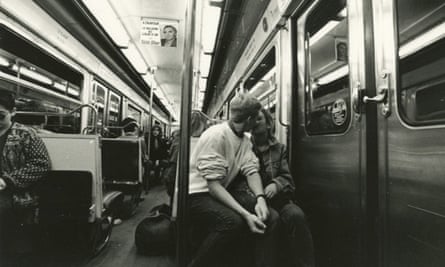
Even more telling was the furore that erupted in the gallery when a local woman berated her sister for posing for a portrait by Meiselas. “Everything is very complex here when it comes to making a photograph of a woman,” said Leila, one of Meiselas’s local assistants. “The husbands or a family member could object ... People are afraid about who will see the image, how it will be used.”
Marrakech, then, would seem an unlikely place to build one of the biggest photography galleries in the world – but that is what is scheduled to happen in the next three or four years. Designed by architect David Chipperfield, and conceived by financier and philanthropist Keren Ruimy and her family, who have strong ties to Morocco, the museum will house an extensive permanent collection of photography from the 19th century to the present day, as well as hosting contemporary exhibitions by photographers from Africa and around the globe. Until it opens (the scheduled date was 2016, though that now seems unlikely), the El Badi Palace, a stately ruin that originally housed Ahmad al-Mansur, the sultan of the Saadi dynasty, will be the locus of all things photographic in the city that distrusts photographers.
David Knaus, the ebullient American managing director of the MMPVA, is refreshingly honest when I ask if all is going according to plan. “Something will happen soon,” he says, laughing, “but the dilemma is what exactly. It has, as they say, been a steep learning curve ... We have found out so much just by having the temporary space open.”
In the first month, he tells me, attendance averaged 200-300 visitors a day, with numbers rising to 400-500 on Fridays when admission is free. Though that exceeded initial projections, the current numbers are even more impressive; the gallery now attracts 600-700 people a day and up to 2,000 on Fridays. “More encouraging still,” says Knaus, “is the fact that we are attracting local people in large numbers – over 65% of visitors are Moroccan, and 85% on Fridays.” It is for this reason that the site of the proposed museum has been moved from outside the old city to the heart of the medina. “The medina is where people gather. That is where it makes sense to place ourselves and try to be part of the local scene.”
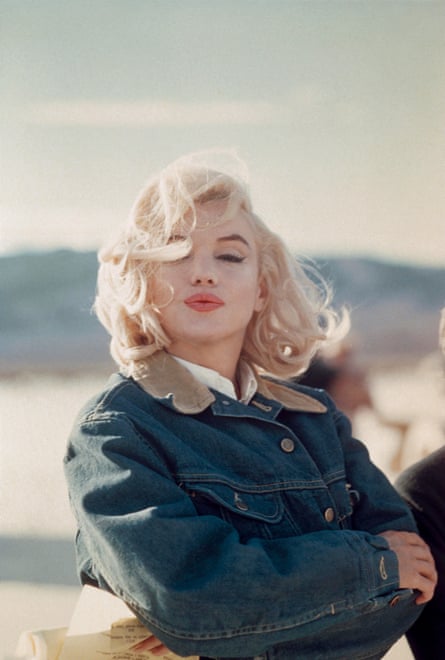
Yousia Khalis, the MMPVA’s cultural mediator, agrees about the shift in location, but sees other obstacles ahead – not least engrained local attitudes to art and culture. “To the average Moroccan,” she says, “a gallery is a forbidding place. It is seen as a cultural palace for the rich and the educated, an elite establishment. It may be a hangover from colonial times, but people feel that they don’t belong there. Morocco is changing, though, but slowly. The museum could be crucial in shifting those attitudes and challenging those kinds of views.”
At the events that took place on the weekend of 7-9 November, a mainly young audience turned out to hear visiting lecturers, including the American landscape photographer, Mark Ruwedel, currently at work on an MMPVA-sponsored series in the desert, and the curator of London’s Whitechapel Gallery, Iwona Blazwick. Many students had travelled on the overnight train from Casablanca to attend – or walked in from the surrounding countryside.
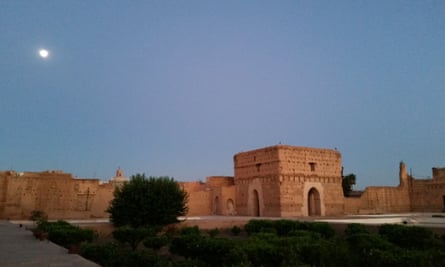
A number of Marrakech’s hip and culturally savvy outliers were also present. At times, there seemed to be a tension between them and the more traditional young people. They spoke less, but when they did, expressed many of the underlying cultural concerns that may yet arise concerning the role of photography – and a photography museum – in Morocco. At one Q&A, a young woman in a head scarf spoke about how many Moroccan people found gallery openings an alien experience, citing the testimony of one of her close friends who did not attend the recent opening of an Eve Arnold exhibition at the El Badi Palace because alcohol was being served.
What Knaus described as “a graceful, polite but emotional argument” ensued, a debate that touched on the underlying issues between traditional religious values and creeping progressive secular ideas. A young man asked why talks were in English rather than French, which led someone to dismiss French as the language of the coloniser and suggest, to much disagreement, that the talks should be in Arabic.
Again, it seemed that the curating of photography in a statement museum in Marrakech could, if not handled sensitively, have many unintended consequences. It’s a concern Knaus is acutely aware of. “We are in a place with a rich oral culture but no real photographic history. We have to think carefully about building a collection, about what kind of building we house it in, whether we need an archive or even a collection, when maybe the space could be better used for education. We have to be careful not to impose a cultural agenda, but to collaborate with locals and the government. It’s an incredibly tricky balancing act and one that requires us to be constantly alert and attentive.”
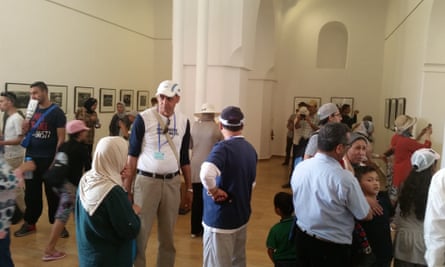
Underlying all this is the biggest question: how will values (aside from aesthetic ones) govern what can be shown at the museum? That, in essence, is the dilemma at the heart of this ambitious project. But both Knaus and Aghrib seem optimistic. “We need to give people a vocabulary,” says Aghrib. “We need to be confident in the work we put on the walls and confident that we can explain the issues around a potentially controversial image. We need to explain that this is also what photography does – it creates debate.”
And that will almost certainly be the case when the Marrakech Museum of Photography and Visual Art finally opens its doors in the teeming medina.
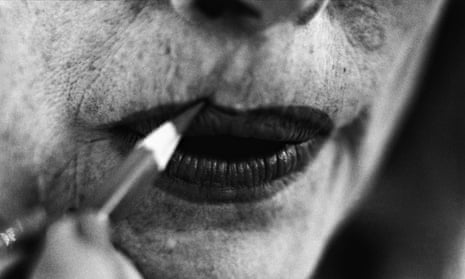
Comments (…)
Sign in or create your Guardian account to join the discussion